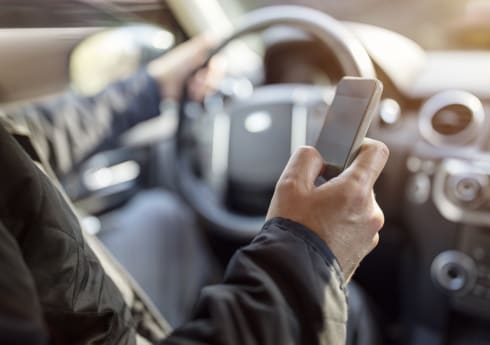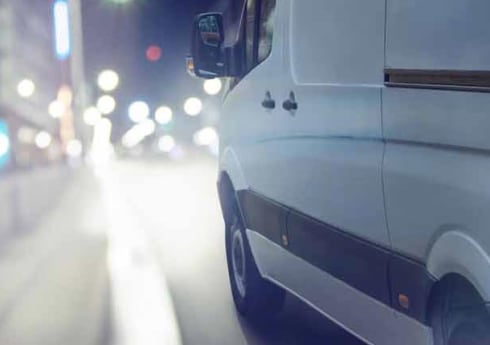7 Simple Fuel-Saving Tips for Your Fleet Vans

Think you’re spending too much money on fuel for your fleet vans? – You’re not alone.
One-third of Federation of Small Business members blame fuel price increases for rising operational costs. And, seeing as vans racked up 48.5 billion miles in 2016 — equal to 101,507 round trips to the Moon — it’s not hard to see why.
Unless you ditch your vans for tuk-tuks, fuel will probably continue featuring heavily on your balance sheet. That said, there are steps you can take to control costs. Here are 7 fuel-saving tips for your fleet vans.
Fuel-Saving Tip 1: Van Size Matters
Fuel consumption increases by 1% for every 100 pounds of extra weight. So, you can slash fuel costs by making sure your vans aren’t larger than necessary.
Only one in five fleets currently have the right-sized vans. That said, SMEs are increasingly warming up to right-sizing, and you should too.
Here’s what to consider when getting a new van:
- What do you need it for?
Will you be carrying passengers? Or will you be using it just for cargo?
- What’s your typical payload?
It’s good to have some flexibility, but don’t go overboard. Try estimating your typical minimum and maximum and use these as a guide
- Where will you drive the van?
Smaller vans work better for city driving. Heavier vans are a safer bet over long distances
- What’s the van’s fuel economy like?
MPG ratings help when comparing models. But, because they’re worked out in a lab, they don’t necessarily reflect real-world conditions. Try asking drivers with similar vans about their experience or look up reviews on websites like WhatVan? for a clearer picture
Fuel-Saving Tip 2: Keep Your Vans Clean
Cut-offs, spares, “just-in-case” items and assorted rubbish add extra weight. Plus, the clutter makes it harder to stow cargo properly.
For these reasons, it’s worth cleaning out your vans regularly — ideally once a week. Trash stuff you don’t need and put leftover items away for safekeeping.
Lighter, cleaner vans will use less fuel and keep your drivers happier.
Fuel-Saving Tip 3: Do a Daily Walk-Around Inspection
Your drivers risk fines and points on their licence if your vans fail roadside inspections. But did you know you’ll also save fuel if your vans are in good nick?
Engine faults, poor quality oil and other issues increase fuel consumption. So, you should carry out daily walk-around checks to make sure your vans are working as they should.
The DVLA has a comprehensive walk-around checklist. For better fuel economy, be especially thorough when checking brakes, engine oil and tyres.
Which brings us to the next tip.
Fuel-Saving Tip 4: Keep an Eye (Or Two) on Tyre Pressure
For every 1% decrease in tyre pressure, fuel consumption increases by 0.3%. To put that in perspective, as little as 2 to 3 PSI of under-inflation could raise your fuel costs by up to 3%.
To save fuel:
- Check tyre pressure regularly and ensure it’s in line with your vans’ recommended pressure. The AA recommends doing it every two weeks. It’s also good practice to check it before driving long distances
- For best results, check the pressure when the tyres are cold. This means no-one should’ve driven the van for at least two hours
- Inspect the tyres regularly. Look out for cuts and bulges and make sure the tread is above the legal limit. You can do this by placing a 20p coin into the tyre’s main groove. If you can’t see the coin’s outer band, the tread’s fine
Fuel-Saving Tip 5: Try Hypermiling
Wait, don’t get put off. Hypermiling is a fancy name for efficient driving.
The UK Energy Savings Trust reckons we waste £7 billion in fuel a year to inefficient driving. So, training your drivers to hypermile is well worth it.
Here are some tips to start:
- Stop reacting, start anticipating. Look ahead to what you’re driving into so you can avoid sudden manoeuvres
- Lift your foot off the gas pedal when approaching junctions or red lights. Modern engines don’t use fuel while coasting in gear
- Drive at constant speeds. Sudden acceleration and hard braking use more fuel
- Use your van’s gears efficiently. Aim for the lowest speed possible on the highest gear possible
Fuel-Saving Tip 6: Get Strategic with Route Planning
Are your drivers taking the most efficient routes?
These aren’t necessarily the shortest. If a road is often congested or accident-prone, you may be better off taking a longer route. Use SatNavs or apps such as Google Maps or Waze to plan routes in advance. And encourage your drivers to switch to an alternative if there’s heavy traffic or other issues.
If you don’t use one already, it’s also worth fitting your vans with telematics. You’ll learn where your vans are going, how they’re getting there, how they’re being driven and whether your drivers are taking unauthorised detours — all insights you can use to save fuel.
Fuel-Saving Tip 7: Use Fuel Cards
OK, maybe we’re a little biased. But hear us out.
Here are four compelling reasons to consider them:
- You’ll save money
Get price discounts, control what your drivers can use their card for and even which stations they can buy their fuel from
- You’ll save time
Your drivers won’t have to save receipts and make expense claims. Less hassle for them and less work for your finance team
- Less paperwork
Use your fuel cards as needed and get one single, itemised invoice at the end of the week
- It’s safer
By linking a fuel card to a specific van or driver, you’ll know exactly who’s spending what and reduce the risk of fraud
Wrapping Up
If you depend on vans to do business, fuel bills are a fact of life. Luckily, there’s a lot you can do to keep costs in check.
Think carefully about your needs before visiting the dealer, keep your vans shipshape and train your drivers to drive more efficiently. You’ll be surprised at how soon you’ll start seeing fuel savings.
Oh, and if you want to save even more money (and make things simpler for yourself and your drivers), you should definitely look into fuel cards.
In fact, why not start right now?
Let us help you get the fuel card that works best for your business.
Having fuel cards can save your business money, do your driver fuel expenses claims automatically and make it a 30-second job to reclaim your fuel VAT. As a free comparison site, iCompario can find you offers on cards from all the big oil companies or multi-brand cards, and deals with no minimum purchase or tie-in contracts.



